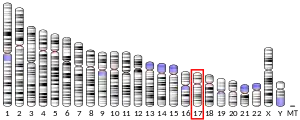| PIGW | |||||||||||||||||||||||||||||||||||||||||||||||||||
|---|---|---|---|---|---|---|---|---|---|---|---|---|---|---|---|---|---|---|---|---|---|---|---|---|---|---|---|---|---|---|---|---|---|---|---|---|---|---|---|---|---|---|---|---|---|---|---|---|---|---|---|
| Identifiers | |||||||||||||||||||||||||||||||||||||||||||||||||||
| Aliases | PIGW, Gwt1, HPMRS5, phosphatidylinositol glycan anchor biosynthesis class W | ||||||||||||||||||||||||||||||||||||||||||||||||||
| External IDs | OMIM: 610275 MGI: 1917575 HomoloGene: 6243 GeneCards: PIGW | ||||||||||||||||||||||||||||||||||||||||||||||||||
| |||||||||||||||||||||||||||||||||||||||||||||||||||
| |||||||||||||||||||||||||||||||||||||||||||||||||||
| |||||||||||||||||||||||||||||||||||||||||||||||||||
| |||||||||||||||||||||||||||||||||||||||||||||||||||
| |||||||||||||||||||||||||||||||||||||||||||||||||||
| Wikidata | |||||||||||||||||||||||||||||||||||||||||||||||||||
| |||||||||||||||||||||||||||||||||||||||||||||||||||
Phosphatidylinositol glycan anchor biosynthesis class W is a protein that in humans is encoded by the PIGW gene. [5]
Function
Glycosylphosphatidylinositol (GPI) is a complex glycolipid that anchors many proteins to the cell surface. PIGW acts in the third step of GPI biosynthesis and acylates the inositol ring of phosphatidylinositol (Murakami et al., 2003 [PubMed 14517336]).
References
- 1 2 3 ENSG00000277161 GRCh38: Ensembl release 89: ENSG00000275600, ENSG00000277161 - Ensembl, May 2017
- 1 2 3 GRCm38: Ensembl release 89: ENSMUSG00000045140 - Ensembl, May 2017
- ↑ "Human PubMed Reference:". National Center for Biotechnology Information, U.S. National Library of Medicine.
- ↑ "Mouse PubMed Reference:". National Center for Biotechnology Information, U.S. National Library of Medicine.
- ↑ "Entrez Gene: Phosphatidylinositol glycan anchor biosynthesis class W". Retrieved 2016-10-29.
Further reading
This article incorporates text from the United States National Library of Medicine, which is in the public domain.
This article is issued from Wikipedia. The text is licensed under Creative Commons - Attribution - Sharealike. Additional terms may apply for the media files.



